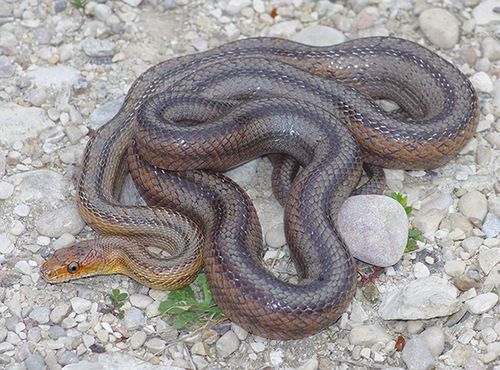
Baird's Rat Snake
Baird's rat snake, with its vibrant gray-orange scales, thrives in Texas's rocky terrains. A master climber and swimmer, it curbs rodent numbers, highlighting its ecological importance. This non-venomous species is a testament to adaptability, captivating with its dynamic presence in diverse habitats.
Low
Aggression
Least Concern
Conservation Status
Stable
Population Trend
Characteristics
Pantherophis bairdi, commonly known as Baird's rat snake, inhabits rocky hillsides of Texas and Mexico. It features a striking blend of gray and orange scales, adeptly climbing and swimming. This non-venomous snake plays a crucial role in controlling rodent populations, showcasing adaptability in diverse environments.
Distribution Range of the Baird's Rat Snake
Pantherophis bairdi, commonly known as Baird's rat snake, is native to the southwestern United States and northern Mexico. It is primarily found in the regions of West Texas and extends into the Mexican states of Coahuila, Nuevo León, and Tamaulipas.
Baird's Rat Snake's Habitat
Environmental Conditions
Baird's rat snake inhabits arid to semi-arid regions characterized by rocky hillsides, canyons, and desert grasslands. The climate in these areas is typically hot and dry, with low precipitation and significant temperature fluctuations between day and night.
Ecological Niche
This species occupies ecological niches that involve being both terrestrial and semi-arboreal. It is often found in habitats with ample cover such as rocks, crevices, and sparse vegetation. Baird's rat snake is an adept climber, which allows it to exploit vertical spaces for hunting and shelter. It preys on small mammals, birds, and occasionally reptiles, playing a role in controlling the populations of these species.
Copyright @ Nature Style Limited. All Rights Reserved.
 English
English